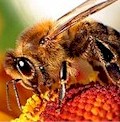Are you looking into the bee keeping hobby craze? The allure of this hobby is that it is challenging, exciting, and even a little dangerous all at the same time. There are those going in with the intention of gaining a bit of pocket money, while others just really love working in the outdoors. Either way, those who see that golden jar of honey all know that real success starts with a reliable bee keeping for beginners guide.
The guide will confirm that there are four essential pieces of beekeeping equipment everyone needs to use. Before the honeybees arrive on your doorstep, you'll certainly want to have these things in order.
1. HiveThe biggest and utmost important on this list is the hive. It is where the bees will be living. When they are not gathering nectar, they will be back at the hive. It's not like they have a weekend cottage to escape to on holiday. The hive is their permanent home. It is the center of all their work and activity. There are different sizes and designs to choose from, which is a subject all on its own. As a general guide, use hives which are popular in your local area - what works for others will likely work for you too.
2. SmokerYour bee keeping for beginners list most definitely needs to include a smoker. The smoker is used to calm the bees and keeps them from going into a tizzy when you approach them. Smoke relaxes and soothes their temperament making them much less likely to sting. While some may think it sinister or cruel, it has a tranquilizing effect and really does no damage - especially when you use organic substances to create your smoke. Natural fibers like burlap will insure the air is not hazardous and the honey remains pure.
3. Metal Hive ToolYour bees will sometimes perform a bit of their own interior decorating and may decide to insulate some areas you never intended them to. In order to pry open your beehive you are going to want a metal hive tool. Once you get the hive open, this tool can then be use to scrape the frames clean.
4. Protective ClothingUsing a smoker will reduce the likelihood of getting stung, but you still need protective clothing. More experienced beekeepers sometimes skimp on this, but as a beginner protective clothing is essential. Ideally use a full bee suit, which will give you head to toe protection from bee stings. But at the very least use a beekeeping veil & gloves - the face is one of the most vulnerable areas to get stung (and the most painful). Gloves will not only save your hands, but also stop them from getting covered in propolis, which is very sticky and difficult to clean off.
